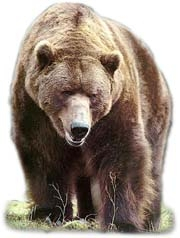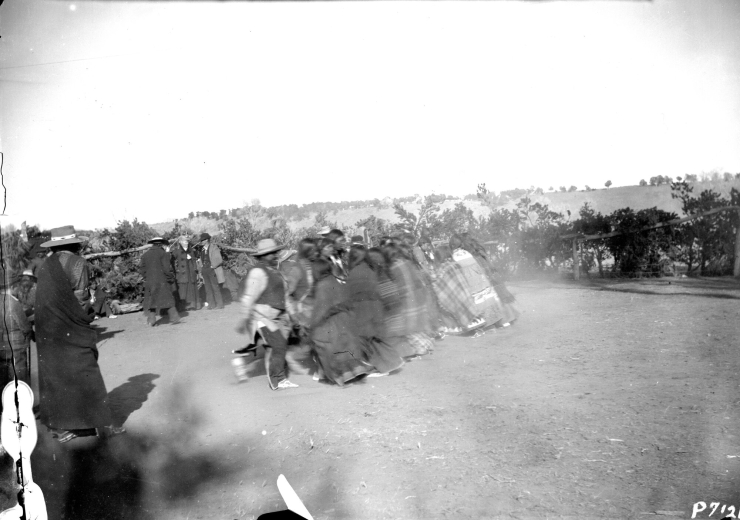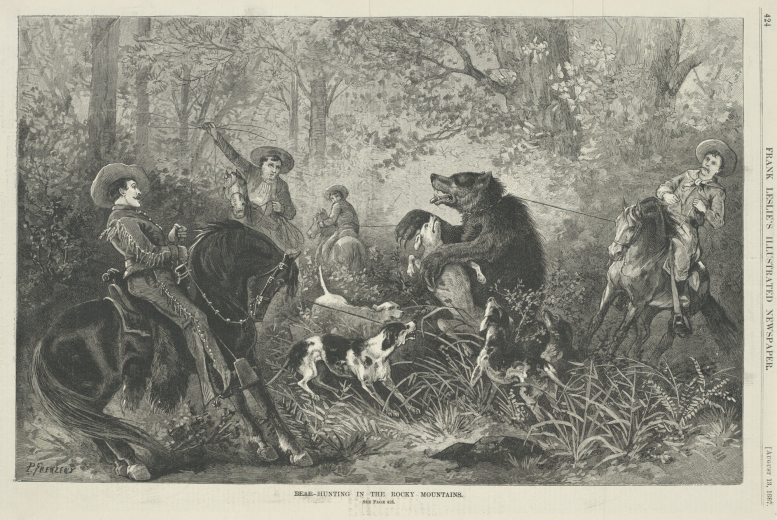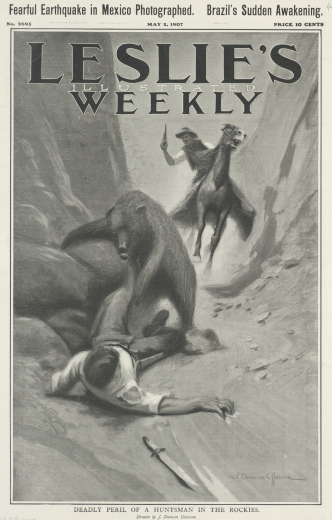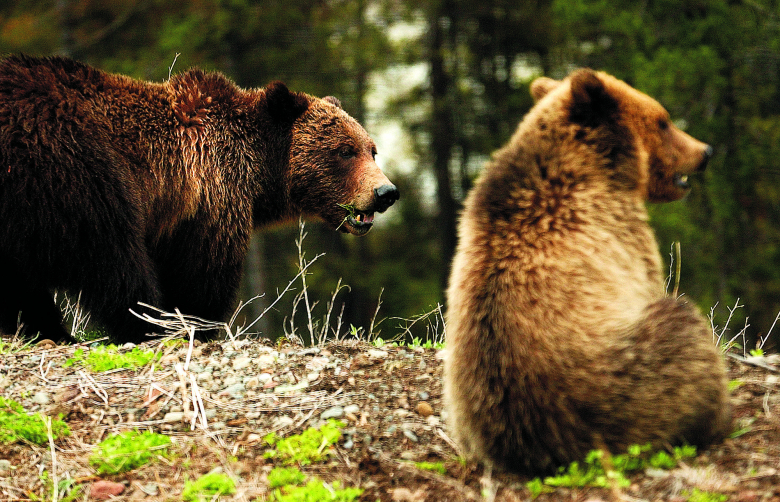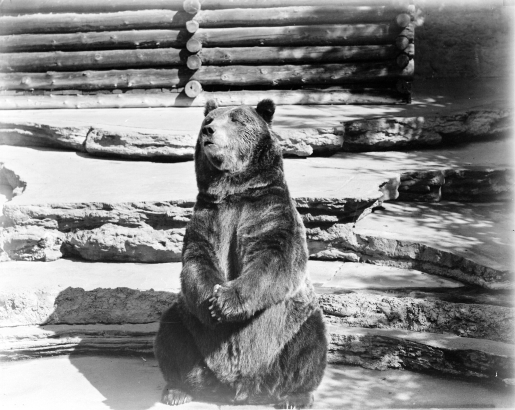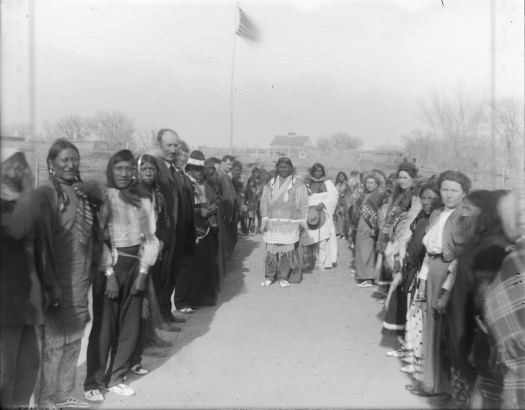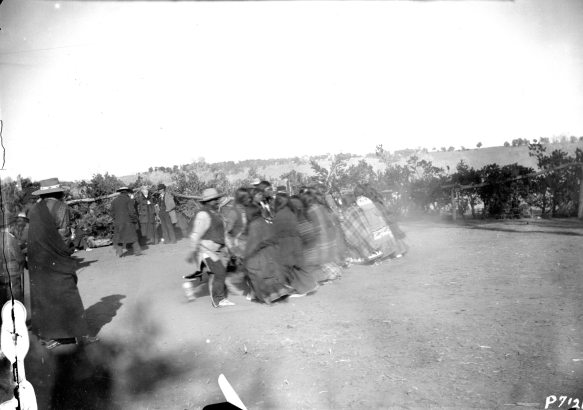In 1904, one of the last grizzly bears in Colorado was killed for crimes he was innocent of. Settlers and local newspapers invented his life story and the name "Old Mose."
Grizzly bears lived alongside humans in Colorado for thousands of years. While the Native Ute tribe would sometimes hunt bears, they also believed their people were descended from the bear, and still have an annual bear dance to celebrate. As far as we know, the first of the white explorers to be killed in Colorado was Lewis Dawson, who stumbled upon a wounded grizzly near Pueblo in 1821. From the beginning of Westward expansion, settlers from the East saw bears as fearsome hunters of human beings and spread stories about their violent nature. Many sought to kill them; however, not everyone had an irrational fear of these creatures. In the words of early Denver settler “Uncle Dick” Whootton,
“He (the grizzly) is not a professional man-killer. That he has been guilty now and then of staining his chops with human gore is true, but it was usually under circumstances which would have made ‘justifiable homicide’ a proper verdict, if the affair had been between man and man.” - Denver Westerners Roundup July-August 2014
Colorado bear historian Dan Martel determined that the last known bear attack on the Front Range took place in 1867 when a 20-year-old hunter named Edwin Vance shot a grizzly near what is now Evergreen, CO. The bear appeared to be dead after being shot by Vance, but was very much alive and attacked the hunter when he approached. Vance died from his wounds three days later. By about 1870, there were no longer any grizzlies along the Front Range, and those in the mountains were under increasing threat.
As more settlers moved into the state, leading people on recreational hunts became more popular. One account involved Englishman Sir George Gore, who came with his friends in 1855 and slaughtered 40 bears and 2,500 bison just for fun. Many others, referred to as “market hunters,” would kill huge numbers of animals, including grizzlies, to sell the meat and skins to growing cities and towns. In 1889, the state of Colorado banned market hunting, but there were not enough people hired to enforce the ban, so it continued. At the same time, ranchers came into the state with cows and sheep, introducing additional food sources for the existing bears. That said, the National Park Service estimates 80% of a grizzly's diet to be plants.
In November 1883, near Alma, Colorado, a local hunter named Jacob Radcliff was hunting and ran to shoot a bear as it approached a dead deer. The bear ended up killing him. Decades after this happened, Rocky Mountain News journalist Frances Melrose said that it was after this death in 1883 that local rancher William Stout saw the bear “moseying along,” shifting his weight slowly from side to side, and named him Old Mose. Other stories claimed Routt County rancher Wharton Pigg named him Old Mose after Radcliff’s death.
It was in 1902 that a Canon City, Colorado, shop owner published a story in Recreation Magazine that claimed to describe the life of Old Mose. It is important to note that none of the newspapers we looked at mentioned a specific bear named Old Mose prior to this 1902 story. The story also blamed the 1883 death of Jacob Radcliff on this bear that now had a freshly created biography, whether that biography was true or not. In 1904, a famous hunter from Idaho named James W. Anthony moved his family to Canon City so that he could hunt for Old Mose. He brought his guns and a trained pack of hunting dogs. Wharton Pigg, having searched for years for the bear who killed Jacob Radcliff, accompanied Anthony on the hunt. In April of 1904, the dogs caught the scent of a bear. They trailed the bear for five days before confronting him among some aspen trees. Anthony was able to shoot and kill the bear with several shots from his rifle.
Newspapers around the state celebrated the death of the bear that they all claimed was Old Mose. They also increasingly described him as a bloodthirsty killer who had killed several men and hundreds of sheep and cattle over the course of forty years.
“Old Mose is said to have killed four or five men in the course of his career, the first of whom was Jake Radcliff.” - Denver Republican May 3, 1904
The bear’s hide was sent to be mounted in Colorado Springs, where thousands of residents came to see what was left of the large grizzly. Later that year, Beecher put the bear on display in his Canon City shop, where he sold photos of the two hunters next to the hide. While the story continued to spread over the years, promoting the hunter's story of a murderous bear, science eventually showed that this bear was innocent of the murders he was accused of; he was a victim of the reputation bears had been given to justify the eradication of all Colorado grizzlies. According to a 1987 letter from the Arizona Fish & Game Department laboratory to Old Mose biographer James Perkins, Old Mose’s teeth showed he was only 10 to 12 years old at the time of his death. The bear they had killed and named Old Mose could not have been the legendary killer of men they claimed him to be, as he was not even born when Radcliff was killed. And, while grizzly bears can certainly be dangerous when threatened and should never be approached, they rarely seek out humans in hopes of killing and eating them.
By 1911, it appeared that Old Mose had been one of the last of his kind in Colorado, as a U.S. Fish and Wildlife report said that they were rarely seen anymore except in some remote part of the mountains. In 1931, the US Congress passed the Animal Damage Control Act, which sought to eradicate any and all animals considered a threat to livestock. This led to the poisoning, hunting, and trapping of everything from bears to wolves to prairie dogs and ground squirrels. By 1953, Colorado was declared free of grizzlies, but one final member of this great native species appeared in 1979, only to be killed by a hunter named Ed Wiseman. While he claimed the bear charged him while he was hunting elk, wildlife experts who examined the bear said she was an old female who had trouble moving due to arthritis. They also determined that she had given birth to cubs earlier in life, but it is unknown if those cubs, who were the last of their kind, went on to live out their lives in Colorado. Today, grizzly bears are protected under federal law by the Endangered Species Act.
irrational - not based on facts or reason
livestock- animals raised for profit or to do a job, like cows and horses
arthritis- a painful swelling of joints, often as a person or animal grows older, that makes movement more difficult
Endangered Species Act - A law passed in 1973 to protect animals that are disappearing and under threat
Do you think people were making up stories to make bears seem more dangerous than they are? Why would they do that?
Have you ever met a person or animal that you thought was scary at first and then learned to make friends with? What changed?

